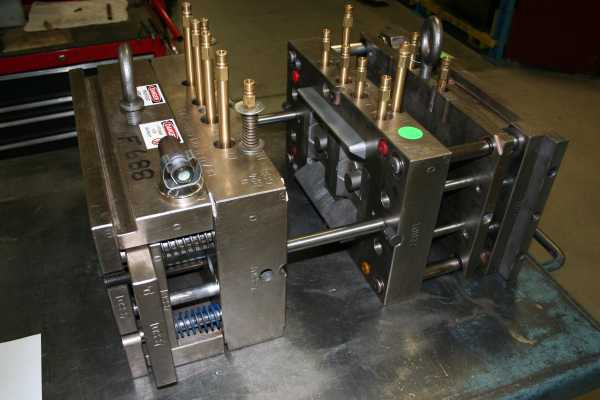OEMs have a significant challenge to manage: achieving production volumes while maintaining high levels of quality and minimizing cost. From an injection molding perspective, mold design and equipment selection play a big role in determining whether these goals are achieved. One key equipment decision for OEMs is their mold cavitation strategy as it directly impacts cost, quality, lead times, and speed of production.
What is a Cavitation?
Cavitation is simply a measure of the number of cavities in the mold - the number of cavities, or impressions, in the mold determines the number of parts produced during a single injection molding cycle. A tool with one impression is referred to as a single cavity mold and a tool with two or more impressions is called a multiple cavity mold – with some molds having over 200 cavities!
How many cavities should my mold have to make the desired volume of parts, at the best quality, and with the highest return on investment?
The process of answering this question may feel daunting. Given the on-going pressure on manufacturers to lower costs, there has been a trend toward higher cavitation molds; however, high cavitation is not always the best option as there are advantages and disadvantages to both low and high cavitation molds - the right choice for you depends on your specific application! In the end, the cavitation decision will be a trade-off between upfront and on-going costs, production volumes, and lead-time. Below are some factors to consider to help you choose the right tool cavitation for your project.
Initial and On-going Costs: When considering costs, there are the initial upfront tooling costs as well as the on-going operating costs to consider. Let’s first discuss the initial costs for tool design and fabrication – generally speaking, a higher number of cavities drives higher tooling costs, thus, a single cavity mold will have the lowest initial tool cost. Regarding on-going costs, a multi-cavity tool will have a lower price per part due to economies of scale; more parts are made in a given cycle or period of time and with a lower amount of labor and machine time required to produce each part – further reducing the cost per part. Lastly, maintenance costs for multiple cavity molds are often higher as well as the operating cost to run the mold on a larger machine tonnage. A cost estimate is recommended for each project to estimate the initial tooling costs as well as the on-going operating expenses to ensure the cost profile of low vs high cavitation molds is understood.
Production Volume: Injection molding is known for its ability to efficiently produce a high volume of products in a short period of time. Higher mold cavitation is often justified for situations where medium to high product volumes are desired – allowing OEMs to manufacture a significant number of parts in a short period and across fewer injection molding machines; additionally, creating one higher cavitation mold is often more cost effective than creating two or more lower cavitation molds to operate in multiple injection molding machines at the same time; this option also avoids potential scheduling conflicts with running multiple machines at the same time.
Lead time: A low cavity mold will typically require less tooling work and time, resulting in a shorter lead time for the mold to be production ready. Lead time can be a significant consideration for OEMs where speed to market is a priority.
Part Complexity: While the capabilities of high cavitation molds have continued to develop over the years, single or low cavitation tools may still be a good option for low volume parts with very challenging dimensions or extremely precise machining requirements. Additionally, single or low cavitation may also be a good choice for products that experience frequent design changes.
Inventory: Runs with high cavitation molds sometimes result in extra product inventory; this may be beneficial to some OEMs since it’s often less costly to make and store large amounts of fast-moving inventory than to risk running short on product, especially during an unexpected period of high demand.
Prototype vs Final Mold: When OEMs are developing a new part for prototyping, a single cavity or low cavity mold is often a good choice to minimize mold cost and reduce lead time, especially since mold proto-types are often further optimized before reaching their final state.
Why Crescent is your “Go-To” Partner for Tool Design
Crescent Industries has experience with a range of tool cavitations and works closely with customers to understand the specific needs of each injection molding project in order to identify the optimum cavities per mold. time and cost!
Tool cavitation is an important design decision but it is just one of the many things Crescent Industries considers when planning and executing the production of an injection molded part. We have an extremely knowledgeable team to assist with all of your tool design and manufacturing questions.


